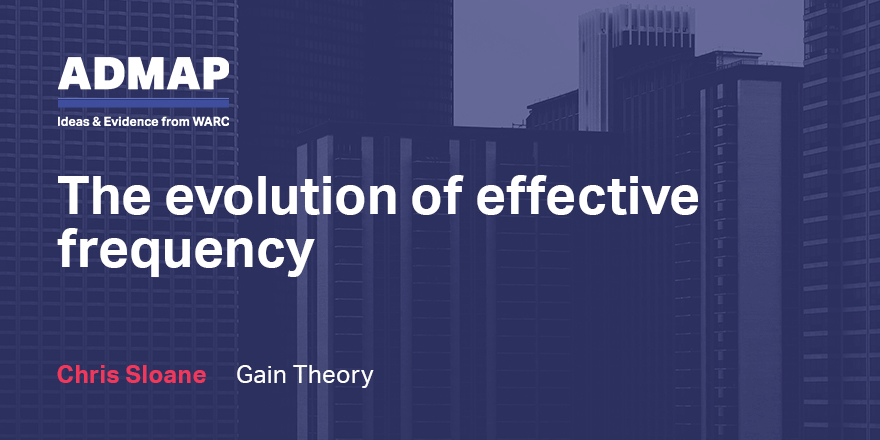The vexed issue of ad frequency, the topic of this month’s Admap, has become more problematic with the proliferation of channels, shorter attention spans and active ad avoidance by consumers.
Chris Sloane, senior partner at Gain Theory, charts The evolution of effective frequency to see what history can teach planners operating in today’s media environment.
The question of how many exposures are required to trigger a response found an answer of sorts in the early 1970s: three, with the greatest impact coming from the first one.
But this figure related to “psychological” exposures which need not correlate to actual exposures. “The tenth actual exposure might be the first psychologically (because the consumer wasn’t in the market for the product earlier),” Sloane points out.
“This was crucial, and arguably ill-understood: three by itself, was never the magic number.”
By the mid-90s, “recency planning” was gaining ground and found its fullest expression more than a decade later in the work of the Ehrenberg Bass Institute for which “reach is more important than frequency of exposure; continuous advertising is more effective than bursts followed by long gaps”.
Gain Theory’s own research in this area has involved developing a simulation of a brand’s target audience, populating the simulation with 1,000 individual agents with different TV consumption habits to replicate the real world and then running various mock media schedules to see the level of reach achieved at four different frequencies while also allowing each frequency to have a different effectiveness.
On the assumption that each opportunity to see (OTS) has the potential to influence sales – i.e. there’s no ad avoidance – the study showed the relative effectiveness per GRP was greatest for those schedules where response decreases as each additional exposure is added: the two reach-based hypotheses were progressively better the more the advertising is spread out.
And when an ad avoidance metric was introduced – based on Byron Sharp’s benchmark that 80% of TV ads are ignored or incorrectly branded – there were seen to be potential benefits to a slightly higher frequency.
“We would argue that testing the shape of the response is important, particularly for newer brands or categories,” Sloane advises.
“Even if the first exposure is best, how much better is it? It will have an impact for the optimal media plan, particularly under conditions of greater ad avoidance.”
This issue of Admap – Frequency: how much is too much? – features a selection of articles by thought leaders from across the globe. WARC subscribers can access the deck Frequency: how much is too much? which summarises the expert advice and key recommendations from all the authors.

Sourced from Admap
